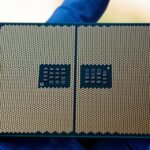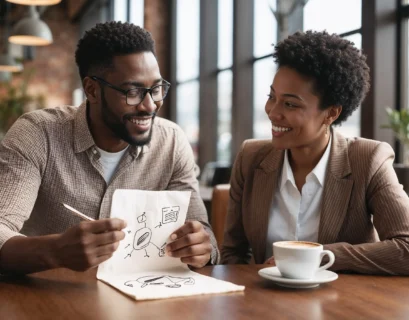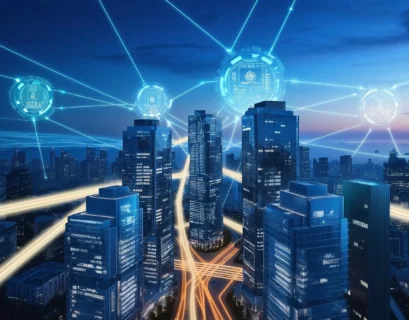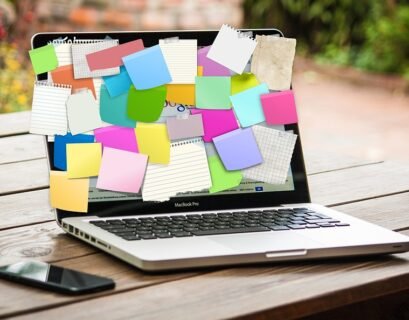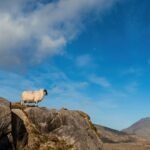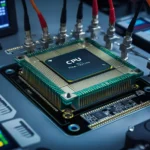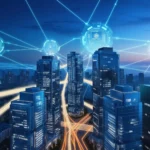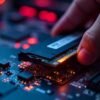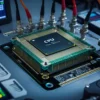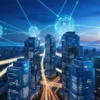The advent of Artificial Intelligence (AI) has sparked debates across various sectors, with the creative arts being one of the most fervent battlegrounds for AI’s role and capacity. As technology continuously evolves, the question arises: can machines truly create art, and if so, to what extent can they be considered artists? This article delves into the intricate relationship between AI and the creative arts, exploring industry insights, technical innovations, and a future outlook while examining the implications for artistic expression and human creativity.
Understanding AI in the Creative Arts
Artificial Intelligence encompasses an array of technologies simulating human intelligence processes, including learning, reasoning, problem-solving, and perception. In the creative field, AI has found applications in generating visual art, composing music, writing literature, and even creating films and animations. AI algorithms often analyze vast datasets to identify patterns, replicate styles, and produce original works that seem both novel and familiar.
Breaking Ground: The Various Forms of AI-generated Art
-
Visual Arts:
AI tools such as DeepArt, DALL-E, and Artbreeder utilize neural networks to create visually stunning pieces of art. They can glean styles from famous artists and apply these styles to new images, bridging the gap between diverse influences to produce unique content. The rise of generative adversarial networks (GANs) enables AI to create realistic images, often indistinguishable from human-made artwork. -
Music Composition:
AI platforms like AIVA, OpenAI’s MuseNet, and Jukedeck generate original music compositions across genres. They can analyze musical pieces, learn structure, melody, and harmony, allowing them to compose music that could deceive even the most astute listeners regarding its human-authored origins. -
Literature:
Natural language processing (NLP) tools like OpenAI’s GPT series have demonstrated capabilities in writing poetry, short stories, and even novels. While they may lack the intuitive understanding of context and emotion that a human might bring, their ability to mimic styles and produce coherent text has sparked discussions on the nature of authorship. - Film and Animation:
AI-driven software can now assist in scriptwriting, storyboard creation, and even video editing. Innovations such as computational cinematography enable new forms of storytelling and content presentation, merging traditional filmmaking techniques with AI-enhanced processes.
Industry Insights: The Intersection of AI and Human Creativity
The convergence of AI and creative arts has led to transformative shifts in the industry. Various sectors are beginning to embrace AI as a partner rather than a replacement. Creative professionals increasingly utilize AI tools to enhance their workflow, pushing the boundaries of what is possible.
For example, a renowned advertising agency might employ AI to analyze consumer preferences and generate tailored content. In fashion, major brands utilize AI to predict trends and create designs that resonate with target audiences. Similarly, musicians and composers leverage AI for inspiration and collaboration, speeding up the creative process while injecting novelty into their works.
In a 2022 report from the World Economic Forum, experts noted that 85% of creative professionals believe AI will significantly influence creative processes in the next decade. This indicates a paradigm shift where human creativity and AI coexist to create groundbreaking art and relevant experiences.
Technical Innovations in AI-Art
The creative prowess of AI is fueled by several technical innovations, reshaping our understanding of both art and technology.
-
Neural Networks and Deep Learning:
AI art generation heavily relies on deep learning models that simulate human brain structures. Convolutional Neural Networks (CNNs) and Recurrent Neural Networks (RNNs) are particularly useful in image and text generation, respectively. These models learn from massive datasets to extract features and generate new content that reflects learned styles. -
Generative Adversarial Networks (GANs):
One of the most audience-catching innovations in AI art is GANs, introduced by Ian Goodfellow in 2014. GANs consist of two neural networks—the generator and the discriminator—competing against each other to create highly realistic images. The generator creates synthetic images, while the discriminator evaluates their authenticity against real images. This back-and-forth process results in high-fidelity output, with AI art surpassing previous technologies in quality. -
Natural Language Processing (NLP):
NLP models like transformers have significantly impacted text generation. They use large datasets to understand context, syntax, and semantics, facilitating coherent storytelling or poetry generation. The introduction of models like GPT-3 represents a leap in AI’s ability to produce human-like content, offering avenues for engaging narratives and dialogue. - Style Transfer:
Style transfer technologies allow AI to apply the style of one image to the content of another, producing striking artwork and reinterpretations of visuals. This process has gained popularity in social media applications, allowing users to create artistic renditions of their photos with just a few clicks.
Future Outlook: AI, Ethics, and Creativity
The relationship between AI and creativity raises essential questions about authenticity, copyrights, and the role of human artists as technology advances. As AI continues on its steep trajectory of growth, several critical areas will shape the future of machines and art.
1. Redefining Artistic Authenticity
As AI-generated art becomes more prevalent, the definition of artistic authenticity is in flux. Traditionally, artists are celebrated for their unique perspectives and emotional depth, qualities AI struggles to replicate fully. The question remains: does AI art have value, or does its lack of genuine emotion and experience undermine its significance? This philosophical inquiry drives ongoing discourse in the art community, prompting discussions about the nature of creativity.
2. Intellectual Property and Copyright
The ownership rights surrounding AI-generated content raise complex legal questions. If a machine produces a painting or a song, who holds the rights? The creator of the algorithm? The programmer? The consumer using the tool to generate content? This uncertainty necessitates new frameworks for intellectual property laws, posing challenges for artists and policymakers alike.
3. Collaborative Ecosystem
The future is likely to see a collaborative environment where artists and machines work in tandem. AI can augment human creativity by either providing suggestions or generating content, allowing artists to focus on conceptualization rather than execution. This partnership holds promise for innovation across various art forms, revealing new techniques, styles, and experiences.
4. AI in Ethical Context
Ethical considerations regarding AI’s role in creative arts cannot be overlooked. As AI-generated art gains popularity and acceptance, there must be a focus on transparent processes and a dialogue around how these tools are employed. Artists and developers alike should be conscious of reinforcing biases or perpetuating stereotypes through AI-generated content.
Conclusion: A Future Where Art Knows No Bounds
As we stand at the crossroads of AI and the creative arts, we acknowledge that the synergy between human creativity and machine capability is a double-edged sword. The advent of technology expands horizons, opening doors to innovative forms of expression while raising critical questions about the essence and authenticity of art.
While AI-generated art can provoke, inspire, and even intrigue, it is vital to recognize the irreplaceable nuances of human creativity. The emotional and experiential grounding that artists offer will continue to be indispensable in a world increasingly influenced by machines. As we explore this brave new landscape, we find ourselves embarking on a collaborative journey towards the integration of AI in art, where machines augment creativity rather than supplant it.
Thus, can machines truly be artists? In the reshaped context of our understanding, perhaps the answer lies not in categorizing machines as artists but in recognizing them as tools that aid and expand the very definition of what it means to create. The future of the creative arts holds endless possibilities, where human ingenuity and AI together may lead us to art unbounded in form and expression, beckoning us to a world where creativity knows no limits.



